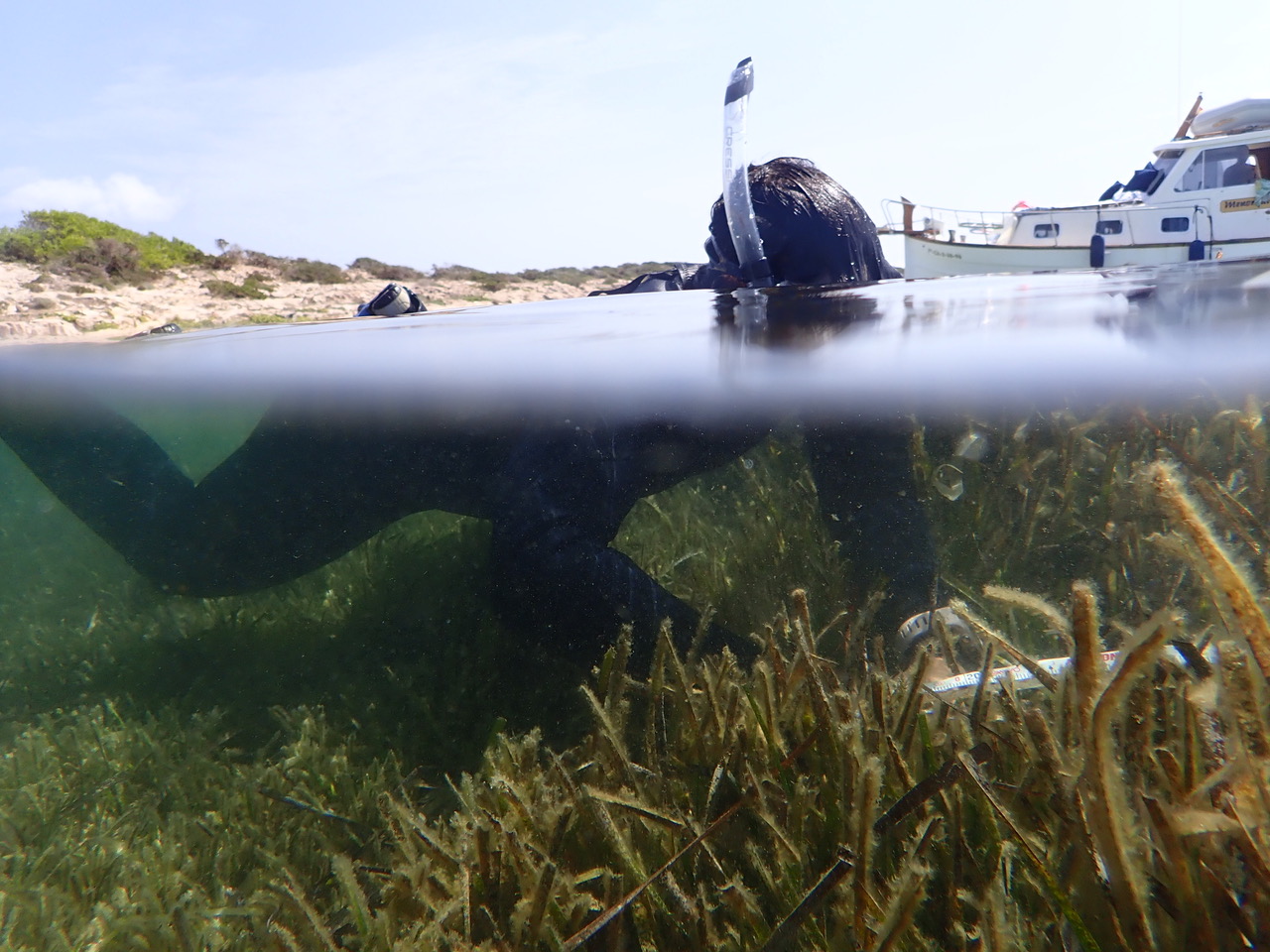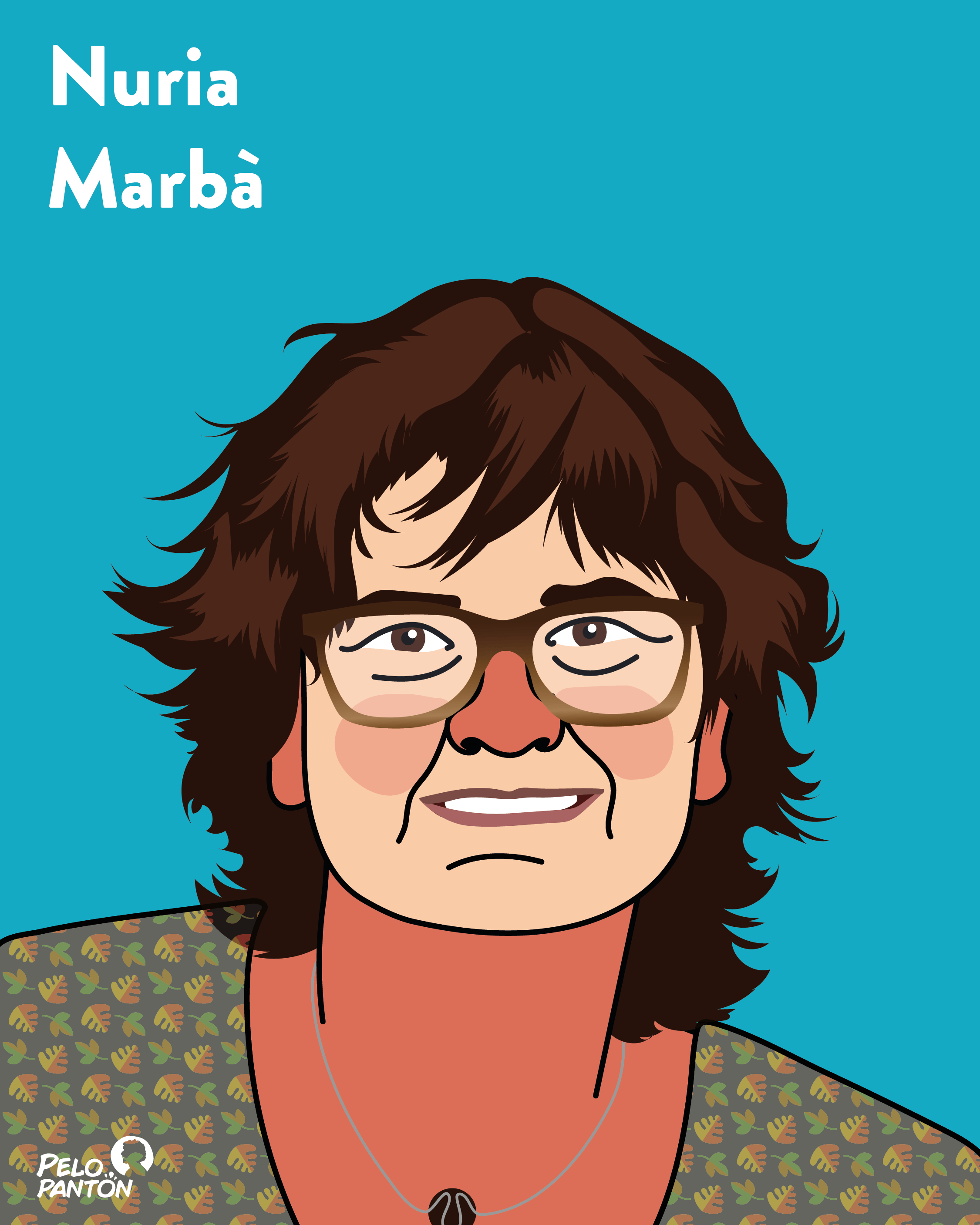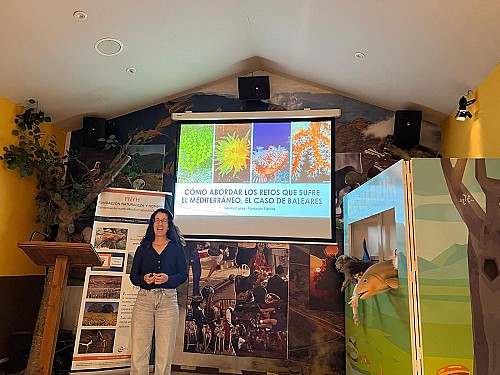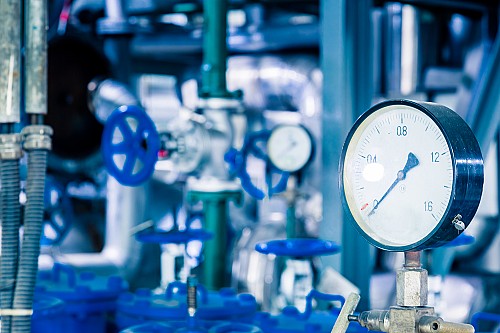Núria Marbà is a Research Scientist with the Global Change Research Group at the Mediterranean Institute for Advanced Studies (IMEDEA; UIB-CSIC) where she is researching the effect global change has on coastal marine ecosystems dominated by vegetation: seagrass meadows of marine angiosperms and some macroalgae forests. She is also interested in how these ecosystems help us mitigate global change and adapt to climate change.
What is Blue carbon?
Broadly speaking, blue carbon is all the carbon buried in the ocean. When we talk about blue carbon, though, we usually mean carbon that is buried in salt marshes, mangrove forests, and seagrass meadows. Macroalgal forests are also included, although in this case the carbon is not buried in the same ecosystem, but on other ocean floors.
Posidonia meadows play a particularly important role as carbon sinks. Why do they have such a large storage capacity?
Posidonia meadows are indeed very powerful carbon sinks. In fact, all seagrass meadows are, but among all of them, Posidonia has the highest capacity. This is because Posidonia itself is a very productive plant and has a great capacity to capture and entrap carbon-rich particles suspended in the water. The material that ends up buried in Posidonia meadows can be preserved for thousands of years; decomposition rates are very slow because they are in an anoxic system. In addition, Posidonia tissues are very poor in nutrients, which really slows down the rate of decomposition.

Do you know how much of the Balearic carbon emissions they can absorb, and would this carbon be buried until the meadow is destroyed?
Taking into account the extent of the Balearic Posidonia meadows, their capacity to bury carbon in the long term, and the Balearic CO₂ emissions, we estimated three or four years ago that they capture 7% of Balearic emissions annually. This is a relevant value.
And yes, the carbon would be buried until the grassland is destroyed. The danger we run when we lose them is not only that we stop capturing carbon. If these huge carbon reservoirs under the grasslands - which can be more than a metre thick - are eroded, the carbon comes into contact with oxygen and the decomposition rates increase so that a significant part would be re-emitted back into the atmosphere, and much of this eroding carbon would be reburied elsewhere in the ocean, probably in the deepest ocean. In short, if we lose grasslands, we may have CO₂ emissions that we are not counting on now.

When did your relationship with the sea begin?
When I was a child, I used to go to the sea as well as to the mountains. My interest in the sea began to grow while I was studying biology and later doing my doctoral thesis.
On 11 February each year, the International Day of Women and Girls in Science is celebrated with the aim of making scientific activity led by women visible, denouncing the gender gap in this field, and achieving full access and participation of women and girls in science.
Pelopantón, in collaboration with Plataforma 11F Baleares, presents an exhibition in El Miradores of 16 illustrations of women scientists who work in the Balearic Islands.
Did you know from an early age that you wanted to dedicate yourself to science?
No, I didn't really have any idea when I was little that I would end up working in science. It came later. It has been the result of opportunities and decisions that I have taken. My interest in studying biology arose while I was doing my baccalaureate, but once I was immersed in my degree, I wasn't sure whether I wanted to go into science or not. I also didn't know if I would end up going into marine science or another field.
What would you say to girls who think that science is their vocation?
To all those girls who are interested in science, or who are not interested in science now but might be later, I would say the same as I say to boys: Get an education and try to do what you really want to do.
Quick quiz for sea lovers:
A book: Dear Mirta, by Maria Escalas.
An image that reminds you of the Balearic Islands: Blossoming fields of almond trees.
A marine species: Posidonia oceanica.
A person or organisation of reference: My parents.
A beach: Es Cargol in Mallorca.
A phrase that defines you: I am a stubborn and persevering person.
Optimistic, realistic, or pessimistic: Optimistic.






